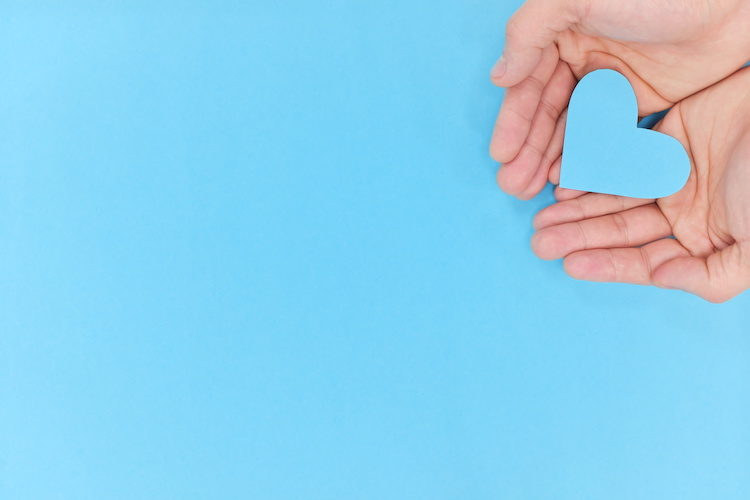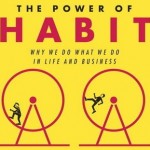The Single Most Important Lesson of the Latest School Shooting
For the last week, America has marveled at the behavior of Antoinette Tuff, credited as the unlikely hero who prevented the would-be school shooting in DeKalb County, Georgia.
As a quick summary, 20 year old Michael Brandon Hill entered McNair Learning Academy August 20th, packing nearly 500 bullets, weighed down by extra magazines, an AK47-type rifle, and a committed resignation that he would die that day. It was a Sandy Hook massacre in the making—a toxic mixture of a troubled young man, a long history of mental unbalance, and enough ammo to shoot more than half the student body.
But, someone turned that around. After Mike snuck through the security door behind a parent, he was met by front office employee Antoinette Tuff who, over the next couple hours, talked him down—or more precisely, talked him “up” and “through”—his shoot-out plans. Miraculously, no one—not the police, the children, the staff, nor the shooter himself—was physically harmed.
Much of Antoinette’s discussion with the shooter is recorded via a 911 call, a call that should be required listening for police officers, hostage negotiators, or anyone desiring an education in effective negotiation strategies (abbreviated and full version are available). Antoinette offers additional insight in her first interview after the ordeal.
“She did all the things we try to teach negotiators,” said Clint van Zandt, former FBI profiler and hostage negotiator, on NewsNation Thursday. “She was a great ‘go-between,’ she identified with the aggressor, she offered help, she minimized what he had done, she helped develop a surrender ritual, she told him what to expect, and told the police what to expect, she offered love, said she was proud of him, she offered him a positive future–every one of those things is something we spend weeks teaching negotiators, and this lady did it intuitively.”
Even more, right before his surrender, Antoinette took care to ensure the police would not harm the boy (even offering to shield him as he gave himself up), and helped him navigate a last drink from his water bottle.
Since the ordeal, analyses have examined religious lessons learned, how we can train a hero, and whether courage can be taught. These are all good issues, and in the future I may pursue a close discourse analysis of the call.
However, here, I want to focus on what I believe to be the single most important lesson we can learn from Antoinette.
It is this: the mere choice to communicate may be the most important component for practicing compassion.
When faced with an angry, irritated, un-medicated, and violent young man, Antoinette could have easily chosen anger, fear, violence, or distress. Rather than lashing out, isolating him, or fleeing herself, she instead invited Mike back into her office and began to talk and be with him. Through her verbal and nonverbal immediacy, she then recognized his pain, related to him empathetically, and reacted with respect and care.
On its face, this idea—the mere choice to be with another and communicate—is obvious. That is why perhaps it’s so easy to overlook it as a key part of compassion. Indeed, this component is missing in the latest theoretical models of compassion (e.g., Way & Tracy, 2012; Miller, 2007). However, as Antoinette’s case clearly illustrates, the mere choice to communicate is something we should pay more attention to as the crucial catalyst for empathy, civility, and care.
Timothy Huffman, ASU doctoral alum and new assistant professor at Loyola Marymount University, makes a powerful case for the importance of “compassionate presence” as a necessary and overlooked component of compassion in his 2013 dissertation. He asks (p. 82):
- How can someone notice the suffering of someone they cannot see?
- How can a person relate to someone they are not with?
- And finally, how does one act to address a need held by a person who is nowhere to be found?
Huffman argues based upon his research with homeless young adults that, “One cannot recognize, respond, or react without some form of presence. Presence, it seems, is a necessary condition for other functions of compassion to move forward” (p. 82).
And compassionate presence is what we see in the case of Antoinette.
Let’s consider a related topic of negotiation and how, for a long time, an obvious but key part was missing in terms of explaining how or why negotiation was successful. The topic of salary and purchase negotiation has a rich history, with much research explaining various factors—e.g., who makes the first offer, the ordering of concessions, the severity of stance, and so on—and their impact on negotiation success. However, in many situations, these factors don’t matter one wit.
So, what’s the difference that makes a difference? In many cases, it’s choosing to negotiate in the first place.
This simple but crucial factor is powerfully illustrated in Babock and Laschever’s Women Don’t Ask where they demonstrate, among other things, that men initiate negotiations about four times as often as women—and these initiations are crucial in terms of men’s increased lifetime earnings and professional success. The takeaway? Successful negotiation requires that the person recognize the situation as one to negotiate to begin with. If you don’t bother to ask for a raise or a better price, a truckload of negotiation skills aren’t going to matter.
It’s the same with compassion. Just initiating nonverbal immediacy and communication is a crucial compassion skill.
Of course, initiating compassionate presence (just like initiating negotiation) is easier said than done. Contextual, environmental, and biological cues can serve as stumbling blocks.
Recent neuroscience research shows that when people see images of people unlike them, their first instinct is not compassion. As reported by The Greater Good, “Within a moment of seeing the photograph of an apparently homeless man, for instance, people’s brains set off a sequence of reactions characteristic of disgust and avoidance…as if people had stumbled on a pile of trash.”
Despite these instant responses, human beings do have some control in the matter. Namely, if we take just enough time and care to be with the “other” person, our instant biases are moderated. For example, noted in the same Greater Good article, Ohio State researcher William Cunningham found that despite the fight or flight response in white people who see black faces for just 30 milliseconds (so short that it amounts to subconscious exposure), when they “had the chance to see black faces for a bit longer (525 milliseconds) and process them consciously…they showed increased activity in brain areas associated with inhibition and self-control. It was as if, in less than a second, their brains were reining in unwanted prejudices.”
Likewise, some of the latest brain scan research indicates that, “people stop dehumanizing homeless people and drug addicts when they’re made to guess what these people would like to eat, as if the study participants were running a soup kitchen.”
In other words, taking a moment to connect and focus on the other as a person can trigger compassion and empathy. Antoinette’s actions, along with this brain scan research, support the Contact Hypothesis, which states that under the right conditions, contact between members of different groups can reduce conflicts and prejudices.
So, we can take a lot away from Antoinette’s courage and empathy in that Georgia Elementary School front office. However, perhaps the most basic lesson is that great things can emerge when we take a moment to be verbally and nonverbally close to another.
Many people have called for ways the government should honor Antoinette as a national hero. But we can also honor her individually, another way.
Specifically, we can choose to spend a bit more time and communicative space with people who, on their face, may look and act quite differently than ourselves—people who we may otherwise be inclined to treat as dangerous, unfriendly, unworthy, or just odd.
In doing so, we might practice “compassionate presence,” a key component to compassion, empathy, courage, and, perhaps, even heroism.
Tips from a Reformed Flossing Slacker
Over the last year, I have listened and re-listened to the audio--book "The Power of Habit" by Charles Duhigg. This book has profoundly affected how I evaluate my daily activities, and specifically, how I might create habits that best serve me.
According to research, ~90% of our behavior is habitual. Why? Habits are easy. They don't require thinking. Habits are automatic
Given the huge percent of our life that's habitual, if we want to change or transform our life, we must, literally, transform our habits.
Sabbatical, and the change in routine that comes with it, is a perfect time to actively re create a few habits. There have been several habit changes I've been up to, but perhaps the one I'm most pleased with is...
create a few habits. There have been several habit changes I've been up to, but perhaps the one I'm most pleased with is...
FLOSSING.
During our "goals" unit in happiness class this summer, I reported with pride to my students that I had been flossing every day for the last three weeks. Rather than, "Wow, Dr. Tracy, that's really swell," I instead was met with simultaneous uptakes in breath, and cries of, "ewww...". One student exclaimed, "Only for the last three weeks? That's DISGUSTING!" I recouped. "It's not like I never floss, it's just, well, maybe, that I, well, 'ya know, I floss, like, if I know there's something caught in my teeth or something." They were decidedly unimpressed.
Despite my students' shock, the statistics suggest that I'm not alone as a floss slacker. According to one article, only 12% of American floss daily. If you're one of the grimy 88% rest of us, and you're interested in changing this habit, here's some tips about how I've made the switch.
1. I purposefully scared myself. During my last dental cleaning in April, I literally turned to my lovely hygienist and said, "I need you to put the fear of god into me about flossing." She looked a bit surprised, and then asked, "Seriously?" With my gums still smarting, she delightfully described what happens to non-flossers.
In addition to gum disease, effects of not flossing include gingivitis and CANCER. Yes, cancer, and specifically pancreatic cancer, is linked to the bacteria and inflammation that enters the body every day when you don't floss.
Not flossing also makes your gums recede. If want a flossing kick-start, do an image search on "gum disease." Just don't do it while you're eating.
And, finally, letting the food rot in between your teeth (40% of the teeth total surface), is just gross. My hygienist said, "Some people say they don't floss because when they do, it smells like rotting meat." Arg! So, not flossing is kind of like perpetually french-kissing a variety of mini carcasses.
2. I planned and strategized how to make it "easy." For me, this meant buying "satin" dental floss that would slide easily between my teeth, and setting out this floss in a prominent easy to see location. In sight - in mind.
3. I began the goal during a time when my routine was already disrupted. Habits are location and time based. So, a perfect time to stop a bad habit or begin a new one is when your routine is already out of whack. I began the flossing habit over my seven weeks out of the country this summer. My evenings there were inherently somewhat different, and my bathroom stuff in a little visible hanging bag, so switching just one more thing to my nighttime line-up wasn't exponentially more difficult.
4. I talked about my new habit. Specifically, I told Brad, my mom, my hygeinist, and my students. What's more, I encouraged them to ask me about how I was doing. Talking to others makes it real, and provides an automatic accountability loop.
5. I practiced the habit at the same time every day. I flossed right before bed. Habits are most easily formed when they are performed the same way in the same time every day. That way, they become automatic. No more decisions.
6. Skipping a day wasn't an option. I told myself that flossing had to happen every night, no matter how late, busy, or sleepy I was.
7. The habit was linked to a small reward. For me, that was rinsing with mouthwash. Mouthwash provides a tingly zing that I've come to love, and one that I now associate with flossing. Research shows that good habits are much better formed when coupled with a reward. And, bad habits are shaken when we can find a new reward to replace the reward of the old behavior. E.g., if 2 p.m. used to equate with a sweet treat, maybe now 2 p.m. is rewarded with a short stroll around the office or Facebook.
The impact of all this is that I've now been flossing every day since Thursday, May 2nd--well above the 66 days research shows it takes for a new habit to "stick." That said, flossing has not yet become completely automatic. I think, though, soon, it will be (and this blog post may indeed cement it...see tip # 4).
So, for all you fellow FLOSSING SLACKERS out there, I invite you to join me in the journey to never again go to sleep with mini carcasses in your mouth. And, if you have any related tips, stories, or challenges about flossing or any other habits, I'd love to hear from you.
Cheers, Sarah






